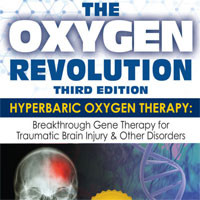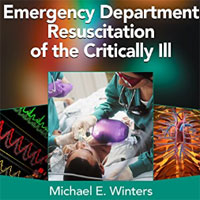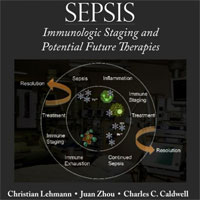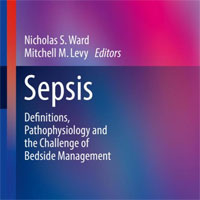Tag: resuscitation
Tailoring Hypothermia Duration to Ischemia Duration Improve Outcome From Out-of-Hospital Cardiac Arrest
Although a larger hypothermia/ischemia ratio was associated with good functional outcome after out-of-hospital cardiac arrest in this cohort, this association is primarily driven by duration of time to return of spontaneous... read more
The Oxygen Revolution: The Definitive Treatment of Traumatic Brain Injury (TBI) & Other Disorders
Hyperbaric oxygen therapy (HBOT) is based on a simple idea—that oxygen can be used therapeutically for a wide range of conditions where tissues have been damaged by oxygen deprivation. Inspiring and informative, The... read more

Vasopressin for Acute Hemorrhage?
Vasoactive medications are one of the pillars of management of shock in Emergency Departments. Inopressors, namely Norepinephrine and Epinephrine, are the two most commonly used pressors in US Emergency Departments, used... read more
Modeling Cardiac Dysfunction Following Traumatic Hemorrhage Injury
Cardiac dysfunction (CD) importantly contributes to mortality in trauma patients, who survive their initial injuries following successful hemostatic resuscitation. This poor outcome has been correlated with elevated biomarkers... read more
The Protective Effects of Regional Hypothermia on Injured Limbs Combined with Hemorrhagic-shock & Tourniquet
The aim of this study is to investigate the protective effects of regional hypothermia (RH) on rabbits' limbs injured by a steel-ball combined with hemorrhagic-shock, and then employed tourniquet over-time, tried to identify... read more
Ventilation Rates and Pediatric In-Hospital Cardiac Arrest Survival Outcomes
In this multicenter cohort, ventilation rates exceeding guidelines were common. Among the range of rates delivered, higher rates were associated with improved survival to hospital discharge. Arterial blood pressure and... read more
Critical Care Doctors Placed Humans in Suspended Animation For The First Time
Critical care doctors have placed humans in suspended animation for the first time, as part of a trial in the US that aims to make it possible to fix traumatic injuries that would otherwise cause death. Samuel Tisherman,... read more
Left Ventricular Wall Findings in Non-electrocardiography-gated CE-CT After ECPR
Few studies have reported left ventricular wall findings in contrast-enhanced computed tomography (CE-CT) after extracorporeal cardiopulmonary resuscitation (ECPR). This study examined left ventricular wall CE-CT findings... read more
Use of Vasopressor Increases the Risk of Mortality in Traumatic Hemorrhagic Shock
Use of vasopressor for traumatic hemorrhagic shock was associated with mortality after controlling for biases (trauma severity; volume of fluid resuscitation). Among 236,698 trauma patients, 3,551 were included in the... read more
Lactate and Stepwise Lactate Kinetics Used to Guide Resuscitation
Lactate is an important parameter for monitoring tissue perfusion at present. Lactate kinetics are particularly important to evaluate the response of ICU patients. Therefore, lactate can be the starting point for resuscitation,... read more
Dispatcher-assisted Cardiopulmonary Resuscitation for Traumatic Patients with OHCA
Dispatcher-assisted cardiopulmonary resuscitation (DA-CPR) was not associated with better outcomes for traumatic out-of-hospital cardiac arrests (OHCA) in achieving a short-term sustained return of spontaneous circulation... read more
Fluid Resuscitation: Evidence-based Solutions?
Intravenous (IV) fluid prescribing is one of the commonest tasks carried out by junior doctors. I still remember around this time last year when I was fresh out of medical school and had just been let loose on the wards,... read more
Early vs. Delayed Administration of Norepinephrine in Patients with Septic Shock
This study investigated the incidence of delayed norepinephrine administration following the onset of septic shock and its effect on hospital mortality. Our results show that early administration of norepinephrine in... read more
Targeted Temperature Management for Cardiac Arrest with Nonshockable Rhythm
Among patients with coma who had been resuscitated from cardiac arrest with nonshockable rhythm, moderate therapeutic hypothermia at 33°C for 24 hours led to a higher percentage of patients who survived with a favorable... read more
Early Prognostication of Neurological Outcome by HRV in Adults with Out-of-Hospital Sudden Cardiac Arrest
The present data indicate that heart rate variability (HRV) analysis could be useful for early prognostication for comatose patients during hypothermic TTM within 24 h after ROSC. The value of HRV as a prognosticator... read more
Healthcare Provider Perceptions of Cardiopulmonary Resuscitation Quality During Simulation Training
Cardiopulmonary resuscitation performance during mock codes does not meet the American Heart Association's quality recommendations. Healthcare providers have poor insight into the quality of cardiopulmonary resuscitation... read more
Vasoactive Medication and Randomized Clinical Trials
Vasoactive medication is one of the cornerstones in the treatment of critically ill patients in shock. Shock can be defined as a failure of the circulatory system to provide adequate tissue perfusion resulting in cellular... read more
Pericardiocentesis During Cardiopulmonary Resuscitation
In this video, Dr. Traci Wolbrink reviews the procedural steps to performing Pericardiocentesis as well as reviewing indications, contraindications and risk factors for patients experiencing pericardial effusion. ... read more
Prehospital cardiopulmonary resuscitation duration and neurological outcome after out-of-hospital cardiac arrest among children by location of arrest
A longer prehospital EMS CPR duration is independently associated with a lower proportion of patients with a favorable neurological outcome. The association between prehospital EMS CPR duration and neurological outcome... read more
Identification of Subclasses of Sepsis that Showed Different Clinical Outcomes and Responses to Amount of Fluid Resuscitation
Sepsis is a heterogeneous disease and identification of its subclasses may facilitate and optimize clinical management. This study aimed to identify subclasses of sepsis and its responses to different amounts of fluid resuscitation.... read more
A Compression Method to Reduce Fluid Balance of Septic Shock Patients
This article presents a close look at the Corporeal Compression at the Onset of Septic shock (COCOONs). Fluid overload in septic intensive care unit (ICU) patients is common and strongly associated with poor outcome. There... read more
Emergency Department Resuscitation of the Critically Ill
A crash course in Critical Care! Stabilize, treat, and save your sickest patients in the ed or the field – with ACEP's ultimate resuscitation guide. packed with succinct evidence-based chapters written by the nation's foremost... read more










